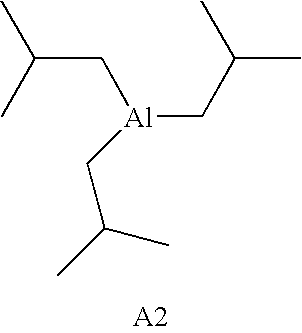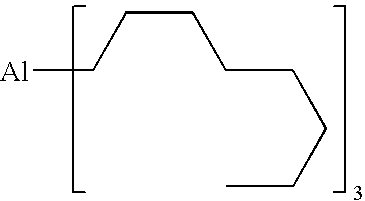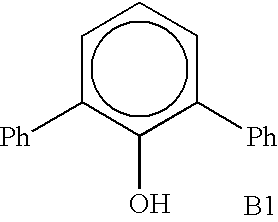Apparatus and method for ziegler-natta research
a technology of apparatus and method, applied in the field of ziegler-natta research, can solve the problems of not being able to adapt to combinatorial research approaches, solid phase forming techniques, comminution equipment, etc., and achieve the effect of reducing the alkoxide content of the resulting composition
- Summary
- Abstract
- Description
- Claims
- Application Information
AI Technical Summary
Benefits of technology
Problems solved by technology
Method used
Image
Examples
specific embodiments
[0106] The following specific embodiments of the invention are especially desirable and hereby delineated in order to provide specific disclosure for the appended claims:
[0107] 1. A method for identifying a catalyst composition for use in the heterogeneous Ziegler-Natta addition polymerization of an olefin monomer comprising:
[0108] A) providing a library comprising a plurality of previously selected compounds, complexes or mixtures thereof comprising a derivative of a metal of Group 2 of the Periodic Table of the Elements,
[0109] B) forming a catalyst composition by sequentially converting the members of said library into catalyst compositions and contacting the resulting catalyst composition with an olefin monomer under olefin addition polymerization conditions in a polymerization reactor,
[0110] C) measuring at least one process or product variable of interest during the polymerization, and
[0111] D) selecting the catalyst composition of interest by reference to said process or ...
example 1
Propylene Polymerization
[0144] In a drybox under a nitrogen atmosphere with oxygen and water content below 1 ppm, 250 μl of each of procatalysts 8,9 and 11-16 (slurried in mixed alkanes solvent) is transferred to a pre-weighed 6 ml vial where the diluent is removed at room temperature under vacuum. After 30 min. the vial is reweighed to obtain the actual weight of procatalyst. A 6 mm teflon stirbar is added and the procatalyst ground to break up the procatalyst particles. The resulting procatalyst powder is reslurried in toluene to give a concentration of 0.4095 mg / ml. Each procatalyst is tested for propylene polymerization under equivalent reaction conditions in a 48 cell automated parallel reactor containing 8 ml glass vial lined reactors (available from Symyx Technologies, Inc.) operated remotely in a dry box to avoid generation of HCl.
[0145] To each of the 48 wells in the reactor is added mixed alkanes: 5394 μl (5515 μl for reactions 1E,F, 2E,F and 3E,F); triethylaluminum, 0....
example 2
Polymerization Modifier Evaluation:
[0147] A library of compounds for testing as polymerization modifiers (additives for modification of one or more polymer properties or polymerization properties) is prepared by robotic synthesis using the equipment and techniques of Example 1. Candidate polymerization modifiers are prepared by combining either one or two equivalents of a Lewis acid reagent (B) with various proton source reagents (A) in a hydrocarbon diluent, typically hexane or heptane, to generate a library of compounds for further screening. A total of 96 compounds are prepared and evaluated under propylene solution polymerization conditions. Selected pairs of reagents that are used to prepare polymerization modifiers are identified in Table 5. The products are the corresponding stoichiometric reaction products, excepting for (B3)3A12 (a product with 3 B groups to 2 A groups) which resulted upon combining two equivalents of B3 with one equivalent of A1.
TABLE 5A1(Et)3 A11:12:1...
PUM
| Property | Measurement | Unit |
|---|---|---|
| temperatures | aaaaa | aaaaa |
| particle size | aaaaa | aaaaa |
| particle size | aaaaa | aaaaa |
Abstract
Description
Claims
Application Information
 Login to View More
Login to View More - R&D
- Intellectual Property
- Life Sciences
- Materials
- Tech Scout
- Unparalleled Data Quality
- Higher Quality Content
- 60% Fewer Hallucinations
Browse by: Latest US Patents, China's latest patents, Technical Efficacy Thesaurus, Application Domain, Technology Topic, Popular Technical Reports.
© 2025 PatSnap. All rights reserved.Legal|Privacy policy|Modern Slavery Act Transparency Statement|Sitemap|About US| Contact US: help@patsnap.com



